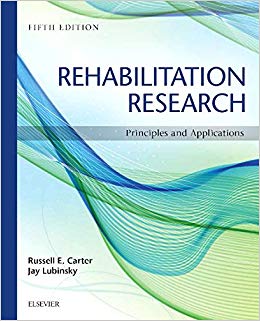
Find out how to use evidence to improve your practice! Thoroughly covering the full range of rehabilitation research with a clear, easy-to-understand approach, Rehabilitation Research: Principles and Applications, 5th Edition will help you analyze and apply research to practice. It examines traditional experimental designs as well as nonexperimental and emerging approaches, including qualitative research, single-subject designs, outcomes research, and survey research. Ideal for students and practitioners in physical therapy, occupational therapy, and communication sciences and disorders, this user-friendly resource emphasizes evidence-based practice and the development of true scientist-practitioners.
- Evidence-Based Practice chapter provides an overview of the important concepts of EBP and the WHO model of health and disease.
- Interdisciplinary author team consisting of a PT and an ASHA dually-certified SLP/AUD brings an interdisciplinary focus and a stronger emphasis on evidence-based practice.
- Discipline-specific examples are drawn from three major fields: physical therapy, occupational therapy, and communication sciences and disorders.
- Coverage of nonexperimental research includes chapters on clinical case studies and qualitative research, so you understand a wide range of research methods and when it is most appropriate to use each type.
- Finding Research Literature chapter includes step-by-step descriptions of literature searches within different rehabilitation professions.
- NEW! Completely updated evidence-based content and references makes the information useful for both students and rehab practitioners.
- UPDATED! Expanded Single-Subject Designs chapter provides a more thorough explanation and examples of withdrawal, multiple baselines, alternating treatments, and interactions – designs that you can use in everyday clinical practice.

